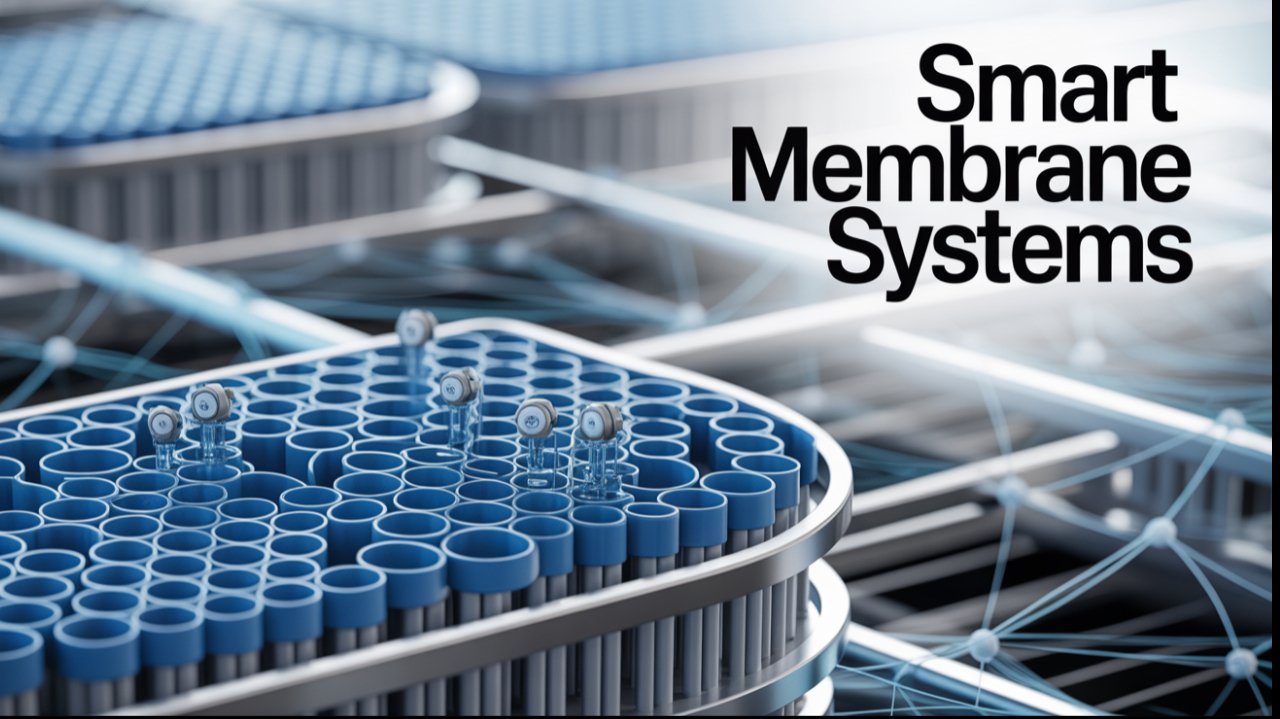In today’s world, the use of new technologies is increasing rapidly to make industrial processes faster, safer and economical. Two of the most powerful technologies are Artificial Intelligence (AI) and Internet of Things (IoT). When both of these are combined in membrane monitoring systems, it not only makes machines smart but also increases their efficiency manifold. In this article, we will know what this technology is, how it works and what impact it can have on industries.
What are AI and IoT and why are they important?
Artificial Intelligence (AI)
Artificial Intelligence is the technology that gives machines the ability to think and make decisions like humans. It processes large amounts of data to recognize patterns, learn and make predictions for the future. For example, your smartphone can give you weather updates, traffic information or restaurant recommendations by understanding your behavior.
In the industrial sector, AI is used for predictive maintenance of machines. Meaning, signals are received before the machine breaks down so that repairs can be done in time and production is not affected.
Internet of Things (IoT)
IoT means connecting physical devices to the Internet, so that they can exchange data among themselves. These devices can be sensors, cameras, monitoring devices or any electronic system.
Imagine, if sensors are installed on machines in a factory that constantly measure temperature, pressure or flow rate, and this data is sent to the cloud in real-time, then managers can immediately see whether the machine is working properly or not.
What are membrane systems?
Membrane systems are filtering systems that use a very thin layer to separate impurities from a liquid or gas. This layer allows only the desired particles or molecules to pass through and stops the rest.
- In water purification: Membrane systems are used to make water clean and drinkable.
- In gas separation: They are used to separate different gases, such as separating oxygen from nitrogen.
- In the chemical industry: Where hazardous chemicals have to be filtered.
It is important to monitor these systems regularly because if there is any fault in them, the entire production can come to a halt and there can be losses worth lakhs of rupees.
Role of AI and IoT in membrane monitoring
When AI and IoT are added to the membrane system, the system can automatically monitor its condition and detect any disturbances in advance.
- IoT sensors – These sensors constantly collect data of parameters such as pressure, flow rate, temperature and turbidity.
- AI models – This data is sent to AI, which with the help of complex algorithms decides whether the system is functioning normally or there is some irregularity.
This study used AI models such as Long Short-Term Memory (LSTM) networks and autoencoders. These models are adept at recognizing time-based data patterns and can accurately predict future malfunctions.
Study results: Amazing improvements
This research found that the AI-IoT based membrane monitoring system performed excellently in several areas.
Anomaly Detection
- The system detected anomalies with 98.3% accuracy.
- The false positive rate was only 1.7%. This means that the system gives very few false alarms.
Improvement in maintenance
- Earlier the membrane system used to fail every 14 days, but now it runs without problem for 21 days.
- This means that the Mean Time Between Failures (MTBF) improved by 50%.
Output and Energy Savings
- The optimization algorithm led to a 12.5% increase in production.
- Energy consumption decreased by 9.3%.
- A mid-scale plant saved about $18,000 annually.
Practical Example
Suppose, a factory purifies millions of liters of water daily. Earlier, this factory had to shut down its machines every two weeks and check them. But now the AI and IoT based system monitors the data every moment. As soon as any error is indicated, it immediately sends an alert.
For example, if the pressure is slightly higher than normal, the system understands that a part is about to fail. Technicians take immediate action and solve the problem without shutting down the system. This not only saves time but also keeps the production running without stopping.
Future prospects
This combination of AI and IoT can be used in many more industries in the future:
- Oil and gas industry – to monitor membrane systems in separating gases and reduce energy consumption.
- Food and beverage industry – where purity and hygiene are paramount.
- Pharmaceutical industry – where ultra-clean water and gas are required.
This technology can get even smarter in the future. Machines may start suggesting their own repairs, order spare parts themselves and further reduce energy consumption.
Conclusion
AI and IoT have revolutionized industrial membrane monitoring systems. It has not only made the system smart and reliable but also reduced its cost significantly. Studies have proved that when technology is used properly, it can not only improve the production but also improve the efficiency of the membrane. not only increases productivity but also protects the environment.
